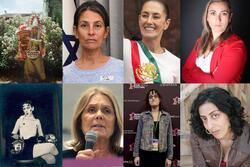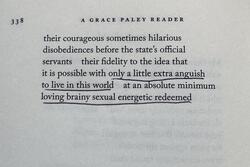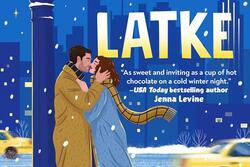Interview with Jane Kohuth: "Estie the Mensch"
Estie would rather be a dog or a turtle or a monkey than a person. But what about being a mensch? We interviewed Jane Kohuth, author of Estie the Mensch, about her story and her passion for Jewish children's books.
Leah (LB): What was your Jewish background? Did you read many Jewish children's books growing up?
Jane Kohuth (JK): I grew up in Midwood, Brooklyn. My family attended a Conservative synagogue, where I also went to Hebrew School. Unlike most children, I liked Hebrew School a lot and was always especially interested in Jewish history. Many of my neighbors were Orthodox Jews, and the neighborhood had a very Jewish feel. Most stores were Shomer Shabbos and there were kosher bakeries, butcher shops, and even Chinese restaurants.
As a child, I read as many Jewish-themed books as I could find. I loved historical fiction and was particularly fond of (among others) the All-of-a-Kind Family books by Sydney Taylor, The Carp in the Bathtub, a funny, slightly bittersweet picture book by Barbara Cohen, author of Molly’s Pilgrim, and The Night Journey by Kathryn Lasky.
Although I loved the Jewish-themed books I read growing up, I also very much wanted to read about kids “like me” -- contemporary Jewish children living lives in which being Jewish was important, but not necessarily the central focus of the story. I don’t remember ever finding a book like this, and every time I found out that yet another one of my favorite characters celebrated Christmas, and was therefore not Jewish (or at least not Jewish in the way I understood it), I felt a twinge of disappointment. So when I started writing for children, I knew I wanted to feature contemporary Jewish families in my stories.
LB: What inspired you to write Estie the Mensch?
JK: Growing up I heard a lot of Yiddish in my day-to-day life, from my parents, grandparents, other family members, and friends. It was part of the fabric of my childhood, and I want to create stories which bring out (and in some way preserve) that aspect of American Jewish life. I was also lucky enough to get to study Yiddish for two semesters in graduate school, where I developed an even greater love for and interest in the language. I hope I get to take more classes one day!
It occurred to me at some point that the dual meaning of “mensch” -- the simple meaning “person” and the more complex meaning the word has taken on in Jewish culture, could be the source of a play on words in a story. I envisioned a child who didn’t want to be a person in the literal sense -- he would rather be an animal. His family, however, wants him to “be a mensch.” The child understands this as his family wanting him to stop pretending to be different animals and act like a human being. Later he comes to understand that being a mensch has a deeper meaning involving thoughtfulness and loving kindness toward others. I didn’t want the book to feel like a “message” though. That can be a kiss of death for picture books. So I worked out a story in which the child figures out something about the real meaning of being a mensch on his own without it ever being explained outright in the story.
The final version of the main character, Estie, is inspired in part by my younger sister, who as a young child had a very active imagination as well as some trouble with, how would you put it, socialization? There’s also a bit of me in Estie. I too was a shy child with a very vivid imaginary world.
LB: "Mensch" is most commonly used to describe men. Why did you decide to make the protagonist a girl instead of a boy?
JK: As you might have noticed, when I talked about my initial idea for the book above, I used the masculine pronoun when referring to the main character. At first, in my mind, the main character of the story was male, and the first draft features a boy named Zachary. But the story wasn’t feeling quite right to me. I questioned myself about my choice to make the protagonist a boy. The character reminded me of me and my sister, after all. I experimented with changing the main character’s gender and name, and suddenly the story felt right to me. Estie came to life. I think sometimes, even for feminists, “boy” can be the default setting when envisioning a human being. I could see no reason why the concept of “mensch” as a good, decent, just person should not apply to women as well as to men. And I was fairly sure I’d seen the term used to refer to women before Estie came along, though I didn’t research it. I certainly didn’t think I was the first! The gendered use of the word “mensch” might make an interesting topic for a research paper . . .
LB: What's next for you (and/or Estie)?
JK: My next book is a picture book called Duck Sock Hop, due out from Dial Books, an imprint of Penguin, next summer. In the meantime I’ll be visiting synagogues, bookstores, libraries, and schools to talk about Estie the Mensch and Jewish children’s books. I’ll be at Celebrate Holliston Day on September 24th, Park Street Books in Medfield on October 22nd, at the Wellesley Free Library on November 17th, and at the JCC Boston Jewish Book Fair Festival Day in Newton on November 20th. I’ll also be making a brief trip to New York and New Jersey. I’m still available for school visits! Somewhere in there, I hope to be writing. I’m working on a Jewish-themed biography for younger children as well as another Jewish-themed picture book. For more information about any of these things, you can find me online at www.janekohuth.com.
Jane graduated from Brandeis University with a degree in English and Creative Writing and from Harvard Divinity School with a Master's Degree in Theological Studies. Though not all of what she's studied makes an appearance in her work (no Biblical Hebrew yet), the habits of creative thought and curiosity she developed in school help her every day. She has worked as a Jewish educator, a children's room library assistant, a writing teacher, and a children's bookseller and organizer of author events. She is represented by The Prospect Agency (www.prospectagency.com). Jane's first two books, DUCKS GO VROOM and ESTIE THE MENSCH were published by Random House in 2011.








